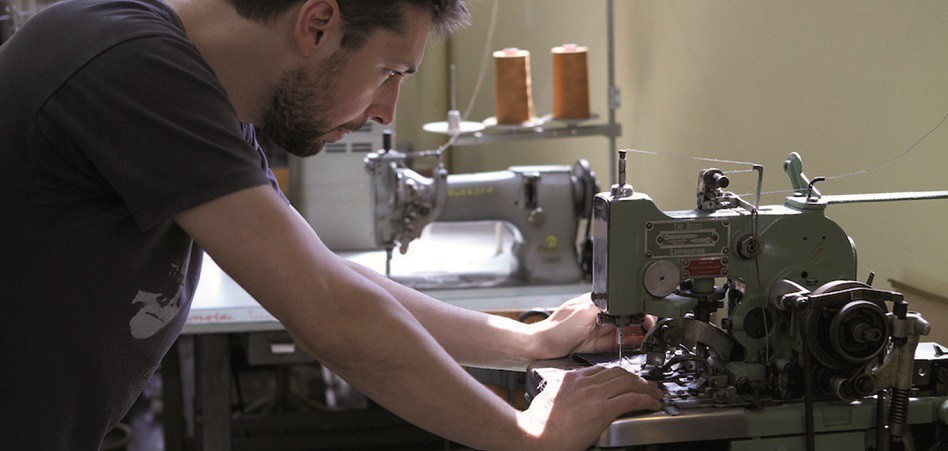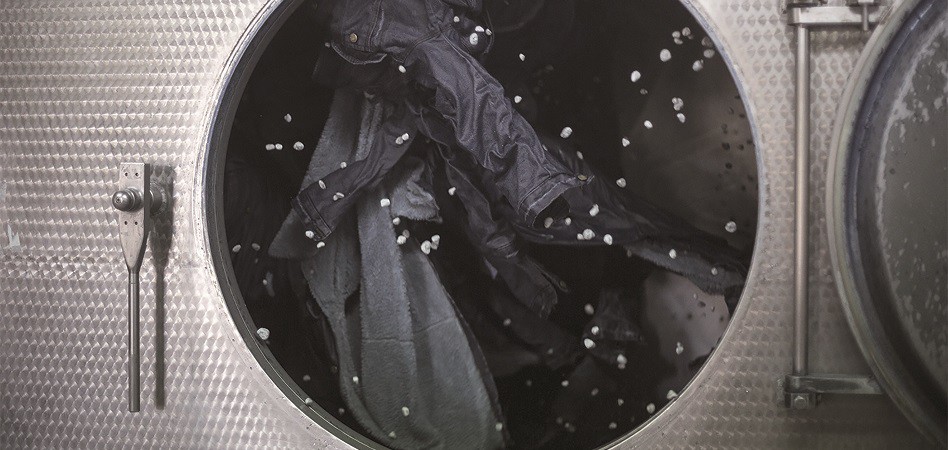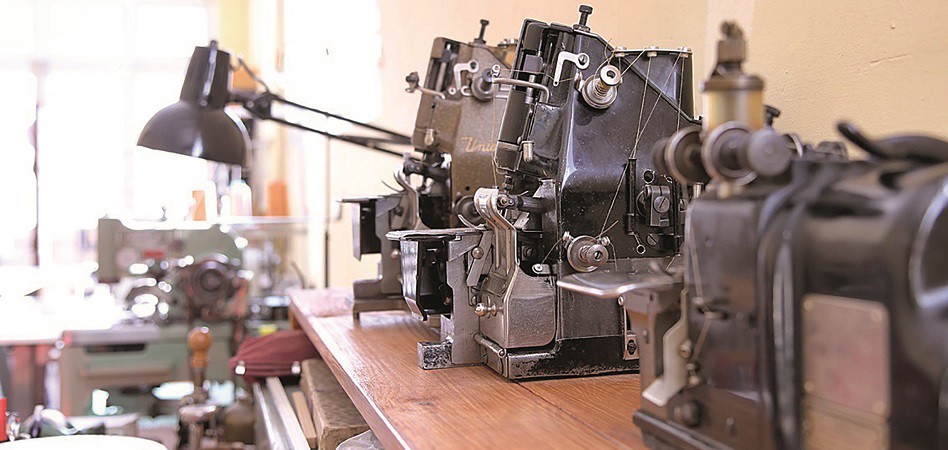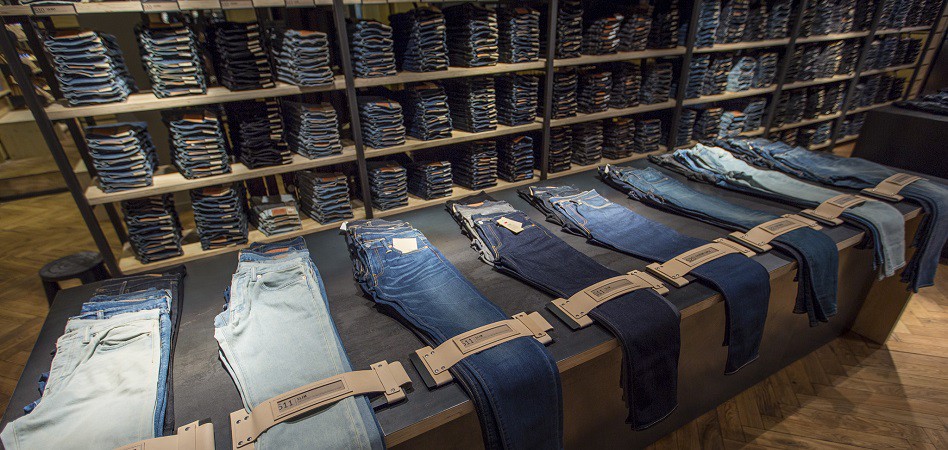
I share with you the excellent article by Silvia Riera in Modaes that is part of the Dossier: Denim, the raw material that defines the product; in which I have had the honor to participate. Thank you very much Modaes and Silvia Riera for giving me the opportunity to analyze a topic that I consider fascinating!
Denim ‘reloaded’: reinventing the industry to update a fashion classic.
The advent of fast fashion, the rise of athleisure or the decommodit category, denim has faced numerous obstacles in recent years, but specialist companies continue to make their way into the industry. As an old fashion rocker, denim doesn’t die, it just transforms. The end of the twentieth century also marked the end of a period in fashion: the era of pret-a-porter came to an end and, in addition, so did the boom in denim brands. Fast fashion took over the fashion market and swallowed up all its sub-sectors, including denim, which was relegated to the commodity category. But fast fashion was also favorable: its need for constant renewal fed this basic material with more design and more fashion. So far this century, denim also came up against athleisure, to which it responded with skinny jean, whose success ended up becoming a ballast, paralyzing the rotation. Denim also came up against the eco-friendly trend, which hit an industry that dyed the rivers blue and caused serious illnesses to its workers. Denim has been immersed in a profound transformation for more than a decade that has now placed it at the forefront of fashion in design, innovation and sustainability. Sympathy for the devil is back. Remastered.
As an old fashion rocker, denim doesn’t die, it just transforms. The end of the twentieth century also marked the end of a period in fashion: the era of pret-a-porter came to an end and, in addition, so did the boom in denim brands. Fast fashion took over the fashion market and swallowed up all its sub-sectors, including denim, which was relegated to the commodity category. But fast fashion was also favorable: its need for constant renewal fed this basic material with more design and more fashion. So far this century, denim also came up against athleisure, to which it responded with skinny jean, whose success ended up becoming a ballast, paralyzing the rotation. Denim also came up against the eco-friendly trend, which hit an industry that dyed the rivers blue and caused serious illnesses to its workers. Denim has been immersed in a profound transformation for more than a decade that has now placed it at the forefront of fashion in design, innovation and sustainability. Sympathy for the devil is back. Remastered.
“Has denim really lost momentum?” asks Guglielmo Olearo, CEO of Denim Première Vision. “Lately I’ve seen denim everywhere, even on the catwalks, all brands now include denim garments in their collections,” he says. According to Olearo, “it’s no longer just the historical players in denim, but also the luxury groups, fashion brands, as well as the brands of lesser-known designers and pure players, all of whom also want to develop creative items with this material, from the classic five-pocket jeans to skirts, shirts and even knitwear”.
The manager, who last year took on the leadership of the textile fair specializing in denim, describes this industry as “vibrant” (“vibrant in capital letters,” he says). “Despite many factors that affect the industry, such as the Turkish or Brazilian situation or excessive production, interest in denim is growing and the forecast for the next five years is generally positive,” says the director. Olearo points out that after several years of slowdown, the denim market is receiving a new dynamic already seen in the United States, where a 4% increase in denim consumption is expected in 2018.
The global denim market generated sales of 93 billion dollars (81,005 million euros) in 2016, according to market research firm NPD. And in 2022, the denim market is expected to reach 105,000 million dollars (91,460 million euros), after growing an annual average of 2%, according to Euromonitor International. Europe and the United States account for 81% of sales, so the growth of the industry will also benefit from the development of new denim consumer markets such as Asia and Latin America.
81% of denim sales are made in Europe and the United States.
Given the ferocious advance of fast fashion and the leadership taken by athleisure, denim’s growth during the second half of the 20th century slowed. Converted into jeans, shirts or jackets, denim has survived trends, wars and social clashes by moving from one urban tribe to another thanks to its attributes, but also to its industrial characteristics, which make it a cheap and moldable fabric. Since Oscar Levi Strauss began marketing the first jeans at the end of the 19th century, the innovations in this garment followed one another in the following decades: denim jumpers made by Levi Strauss went from miners to farmers, passing through railway workers or cowboys.
Thanks to innovations such as the rivets at the tension areas of the trousers (where the Levi’s 501 were born) or Lee’s invention of sanforizing (a procedure that prevents the trousers from shrinking) in 1919 or even Lee’s introduction of the zipper in 1926, jeans gained durability but also comfort. And innovation stayed here. The arrival of jeans in Europe, the golden era of Hollywood, the counterculture of the sixties and successive urban tribes simply extended the denim market.
The 1970s took denim to a new level to make it a brand and a cult object. The boom in brands came in the 1970s and 1980s. Some of them, such as Wrangler or Lee, at an international level, or Lois, in the Spanish market, already existed before, but it was in these two decades when they reached their maximum popularity indexes. In fact, the myth of jeans is based on the select club of the Big Three, composed of Levi’s, Wrangler and Lee. Italian brands such as Diesel or Replay and French brands such as Liberto, Marithe and François Girbaud or Chevignon began their path around them. In Spain, the youth of the Transition changed from corduroy to denim. Local brands such as Pepe Jeans, Pepe Pardo (owned by Liwe Española and an embryo of the Inside chain store), Cimarron or Lois lived years of splendor.
If Levi’s was the brand of the 50s and 60s and Wrangler the brand of the 70s, Diesel was the brand of the 80s and 90s. But what was the brand of jeans of the 2000s? A difficult question to answer. Not even the experts surveyed by Modaes.es have been able to agree: maybe 7 for All Mankind, Cheap Monday, Citizens of Humanity or the everlasting Levi’s. There is no quorum because the beginning of the 21st century in denim was capitalized by fast fashion. The jeans, in the first decades of the century, were from Zara, H&M and Gap.
In Spain, the youth of the Transition changed from corduroy to denim.
Paradigm shift
The rise of large-scale distribution also pushed prices down, with labels that can cost seven dollars in a retailer such as Kmart or 9.95 euros on H&M’s shelves. A study by Aroq Limited in 2014 showed that, in the United States, a pair of jeans cost an average of 25.02 dollars (19.7 euros), 0.8% less than in the same month of the previous year, when they were priced at 25.86 dollars (20.4 euros). That year, the turnover of the upper segment of jeans, garments over 75 dollars, fell in the U.S. market by 19% compared to the same period of the previous year. The upper-middle segment, up to 75 dollars, also lost market share, going from 12.3% in August 2013 to 9.2% a year later.
The slowdown in the industry was more than evident. Levi Strauss, the industry’s flagship, reached a total of $7 billion in revenue in 1997, a record that has never been surpassed again. Between 2001 and 2010, the U.S. group failed to break the $4.5 billion barrier. In an article published by the Harvard Business Review, Chip Berg, CEO of Levi Strauss, said his goal is to bring the company to $10 billion. “Levi’s lost the consumer generation in the early 2000s, but today our consumers are younger than ever, so we’re gaining momentum as we bring them back,” he said.
“The market changed when the price changed,” says Borja Viedma, head of Six Valves. “Before all jeans were more or less the same price, about 12,000 pesetas, while now there are from fifteen euros to 180 euros or even more,” notes the businessman. According to Viedma, the denim market “has become very widespread and people also know how to appreciate it”, and retailers such as Inditex and Gap have accustomed consumers to finding good products at a good price. “In the end, our competitors are the specialists, we seek those who are looking for a brand name product, but the market share is becoming smaller and smaller”, he points out.
Between 2001 and 2010, Levi’s did not manage to break the 4.5 billion dollar barrier.
Fast fashion turned a garment into a cheap commodity that had reached its saturation point. At the dawn of the 21st century, jeans had barely evolved in terms of materials and shape, and were very similar to the garments of a century ago. By the end of the 1990s, the industry had already begun to react by focusing on finishes: snowy jeans, jeans with chemical washing, faded jeans… But it wasn’t the established brands that took advantage of it all, but the distribution giants, who continued to expand this industry and reposition specialized firms into the premium segment, a territory that was difficult to defend.
“Before a pair of jeans was designed for several campaigns and now there are several jeans for a single campaign; now more sophisticated denim is valued,” says Viedma. According to the executive, twenty years ago, a campaign consisted of five or six models, two men’s, two women’s and one accessory. Now a campaign consists of at least 300 garments. The businessman also points out that in the past ten fabrics were needed to create the collection, while now fifty are needed.
Price diversity led to confusion between brands, channels and positioning. The study Price and perceived product quality: a comparison of denim jeans in three price categories, conducted by a team of researchers at the University of North Carolina, concluded that price was not indicative of the quality of a denim garment.
The paper analyzed the characteristics of denim garments from three different price ranges and determined that price ranges do not respond to technicalities, such as strength or durability, but to other elements such as brand, design or pattern. In the same way, a study by Euromonitor stated that consumption had drifted towards low or moderate-priced jeans without major labels and this had led to increasing confusion between high-end jeans and cheap jeans.
On the other hand, the skinny jeans were, at first, a stimulant to activate an exhausted market and it connected with the boom of athleisure. It was the first innovative model that the industry launched in decades in terms of design, structure, materials and finishes. But ten years of skinny jeans alone brought the denim industry back to a standstill. At fairs, on catwalks, in fashion magazines, even in fast fashion stores, other styles were seen: the straight leg, the boyfriend, the elephant’s legs. But the market resisted change. Until now.
New generations continue to wear jeans, but they are changing the way they wear them, because they have different knowledge about the history of this garment. “For them, denim is now more of a fashion item that follows creative trends than a special product that they keep for years,” explains the CEO of Denim Première Vision.
According to Olearo, the people who wore denim in the 1960s and those who wore it in the 1990s had different motivations, but were using it the same way. In 15 years, argues the expert, the story will talk about denim from a different perspective, but even so, denim will be there. “You can see it with Levi’s,” he says. “The brand had difficulties in the 2000s, but since it managed to adapt its messages and understood that it had to play more with its values than simply communicate with its products and image, Levi´s has managed to renew its success among the new generations,” the expert explains.
In an article in the Harvard Business Review, Chip Berg explains that the first milestone of the Eureka laboratory was to relaunch the women’s jeans. “Our women’s business had been in decline, due in part to the increase in athleisure,” said the manager, who confesses he goes crazy every time he sees women in restaurants wearing yoga pants, when in denim they would look much better: “but they’re choosing sport because it’s more comfortable and I told our designers that we had to solve this problem. Since that relaunch, the women’s business has experienced eleven quarters of steady growth and sales have gone from under $800 million to over $1 billion a year,” he says.
New generations have different knowledge of the history of jeans.
A unique industry.
“Denim is different from all other products, it’s the king,” argues Gabriel Farias, a sourcing expert. Farias, who has been based in Honk Kong for years, maintains that the entire value chain of the denim industry is unique, from sourcing to its trade network and points of sale. “From the point of view of production, denim is the most complicated garment and the one that involves the greatest number of processes: its manufacture is, along with footwear, the most complex in the fashion industry,” says the expert. “When you are sourcing denim, you have to go to specialized factories and know their technical capabilities,” says Farías.
Oliver Meca, a sourcing consultant, agrees. “Denim is a type of textile product that needs knowledge and, in its specific case, not only technical, but also artistic knowledge,” he explains. Specialized denim companies, of course, have a team of experts, but this is not common in multi-product distribution groups.
“All groups want to bet on denim, but it requires technical skills and you have to know how to resolve doubts, otherwise the project ends in failure”, he asserts. Meca is of the opinion that it is necessary to know denim in order to be able to give quick and correct answers to very technical questions: “if a supplier says it can do an aggressive wash on a 10-ounce, be wary”. “Those who don’t have technical knowledge can say, and do, all kinds of mess,” he says.
Meca also points out that in a denim sourcing strategy, the choice of specialists is good not only because they give reliable answers, but also because they are the ones who really innovate.
But for years, the sector has been at a standstill. “Just before the textile crisis we had already invested in robots, lasers and even ecological washing, but all this stopped and took a step back when production was relocated to Asia”, explains Juan González, from Capitan Denim. González states that the denim industry was already one of the most advanced before the crisis in the textile industry model that occurred at the end of the nineties.
The young businessman is a member of the second generation of the founding family of this company, whose origins date back to 1973 and which is currently one of the few factories manufacturing jeans that remain in Spain and probably the only one that carries out the complete cycle, with washing and finishing. Juan and his brothers José María and Otoniel took the helm of the family business, which employs fifty people and whose core business continues to be the manufacture of jeans for third parties.
“It’s been ten years of crossing the desert, with months in which the factory came to a standstill”, explains González, who points out that now there are still small standstills, although the pace of production is more fluid. The young businessman prefers not to talk about relocation because he believes that this upturn, rather than a shift in sourcing policies of brands, is due to the disappearance of other players. To survive the textile crisis in Europe, the González family launched its own brand and continued to bet on differentiation. “We compete on value, we cannot enter the price war because we would have to be precarious: we fight with what we have, which is a local production and sustainable fabric,” says the businessman.
After years of standstill, experts point out that the denim industry is the one that has incorporated more technological innovations.
However, after these years of standstill, experts agree that it has been precisely the denim industry that has developed more technological innovations in recent years with a view to replacing processes that were manual until now, in addition to being harmful to the health of workers. With the incorporation of technology, denim production is much more efficient in the use of natural resources and has eradicated practices such as bleaching, sandblasting, stonewash or potassium permanganate spray.
“You can find a fully automated denim factory in the middle of Ethiopia,” says Gabriel Farías. The expert in supply strategies argues that it will be this sub-sector of the pioneers’ fashion to face the new stage of neo-relocation, where customization will be strategic. According to Farías, the denim supply chain already has a degree of automation and digitalization that places it at the forefront of the fashion industry as a whole.
Until now, retailers have sourced from remote locations, both basic garments and fashion, but ecommerce has changed these rules and now sourcing is changing its model again with the help of digitalization. The technology is aimed at giving greater speed and flexibility in the supply chain, with the aim of reducing stocks as much as possible. In this sense, Farías considers that the basic items will continue to be manufactured in a distant location, but the finishes that add design and value to the garment will be executed in proximity. ” A basic product will come from Asia or Africa to the consumer markets in precooked mode, which will be auctioned as close as possible to the logistics centres for distribution or to the points of sale, even at the points of sale”, he explains.
In addition, denim is the fashion segment that has advanced the most in terms of product.
Denim is also, at present, the fashion subsector that has advanced the most in terms of product. According to Oliver Meca, it is the rest of the sub-sectors that are really in neutral fabric. “In knitted fabrics, everything is yet to be invented; in flat fabrics, the same conventional openwork looms continue to be used, where the most complex thing continues to be making a jacquard, but, on the other hand, denim is being transformed a thousand times”, he affirms.
The CEO of Denim Première Vision says that fast fashion or sports fashion, in short, besides being new competitors for the denim industry, are “generators of opportunities”. According to Olearo, there is more and more technological innovation to improve creative and manufacturing processes in the denim industry, especially with regard to sustainability, such as new ways of washing with less water thanks to laser technology or ozone washing.
In this sense, the executive points out that collaborations between brands and industrial suppliers to integrate technology in fashion products, and especially in denim articles through connected devices and technologies, will become more and more common. “An example of this are the latest collaborations that have been coordinated between different segments of the fashion industries or their cross-over with other economic sectors, either in terms of sustainability or in the development of new products, such as the connected jacket made by Google and Levi’s,” he points out. New companies, new industry.
New companies, new industry.
“Despite not producing a luxury item, the denim industry is very complex and is the only one with a value chain whose players go hand in hand, from the weaver, to the maker and the machinery manufacturer,” says Oliver Meca. The pressure for sustainability has forced this bond, at the same time as it has contributed to the automation of the industry, substituting traditional processes that until now have been carried out manually with the latest generation machinery. Not only in denim, but in the textile industry as a whole, sustainability is the main accelerator of innovation in raw materials and processes.
In September 2018, El Corte Inglés organized the ninth edition of Ecoencuentro, with the participation of the weaver Evlox, the denim group G-Star and the technology manufacturer Jeanologia. The common denominator of the conference was to look for an industry that minimizes its environmental impact and moves towards circularity.
The Dutch company G-Star, for example, has given a new twist to sustainability in search of the development of a circular industry. Last February, the company launched the most sustainable jeans that the industry currently has to offer, made of organic cotton, with an indigo dyeing technique that is as clean as possible and with eco-friendly buttons (which avoid the use of chemical products such as electroplating). In the design of the garment, rivets and zippers were eliminated because they are difficult to recycle once the garment is discarded.
To certify all the effort, G-Star submitted these jeans to the standards of the Cradle to Cradle Innovation Institute, which gave it the highest rating. To make this garment, the company has spent two years dissecting each of the industrial processes in the chain of denim and applying the best sustainability practices to each of them. The final objective is that these garments, which are now seen as eccentric, become the new industry norm in the coming months.
G-Star has given a new twist to sustainability in search of the development of a circular industry.
María Blanes, Director of ID+i at the Technological Institute of Textile Innovation (Aitex), also participated in the Ecoencuentro conference. She pointed out that, despite the good dynamics of sustainability in the textile sector, “it presents a series of limitations that only innovation and research can improve”. In this sense, Blanes noted that the sector must continue to emphasize creativity, but also move towards custom design and small-scale craft production.
In this line is the Catalan entrepreneur Franquesa. In 2012, Franquesa started his own business of personalized jeans, Companion Denim. “The first years were for learning, testing. I had experience in design, but not in the more physical part of the business,” he explains. A year later, he launched the brand and expanded his team, which now consists of seven people. Companion Denim now has two lines, a tailor’s line and a collection line, which are exported to Switzerland, Germany, China and Taiwan. “I move in a very small but growing niche,” he says, pointing out that numerous denim brands are emerging, working on heritage, seeking the rawest, most classic image through old machinery and traditional techniques of dyeing, weaving and finishing.
Franquesa studied textile design and fashion, and explains that he has always been interested in fashion and denim, a sector to which he feels attached since he was a child because his parents had an industrial laundry that worked for large groups in the sector, such as Levi’s. “I have denim in my DNA,” he says. “There are consumers who are denim lovers and who know it and are hooked on it,” he says.
“This is a garment that must be known, that has a rich and complex history that connects it with the miners, with workwear, a history of social rupture and it is a symbol of authenticity, of subculture,” says Franquesa. According to the young businessman, denim, unlike other garments, is a product that has evolved historically, which brings a lot of value. “A T-shirt doesn’t have this depth,” he says. “In denim there is a lot of symbology, only with the ageing of a fabric is there a reflection of a certain type of lifestyle,” he stresses.
Industry connoisseurs appreciate denim ‘made in Japan’.
Franquesa’s bet is becoming quite common in the denim business.
The interest of new generations of consumers to know where the garments come from is bringing to light a series of businesses that two decades ago would have been unthinkable. Companion Denim, as well as other denim sewing companies, draws from Momotaro Jeans, a Japanese brand founded in 2006 in the coastal town of Kojima that has become a cult signature for denim lovers. For a pair of Momotaros you can pay up to 2,000 dollars, but its average price is around 300 dollars.
Like a good wine, these jeans are first and foremost appreciated by connoisseurs because they are made in Japan. The quintessence of the American way of life is paid as gold when the Japanese elaborate denim with old looms and using traditional techniques to dye the yarn with indigo. Other Japanese brands such as Kapital or Wharehouse are also in the same line. Momotaro is perhaps the most popular of this segment, which borders on luxury. The company already has its own network of stores in Japan and some shops in the United States, in cities such as New York, Chicago, Seattle and Los Angeles.
In fact, the premium segment as a whole, where most of the world’s denim brands are aligned, is focusing all investments on finishes and custom design. Thus, although there is innovation in each of the phases of the value chain, the greatest acceleration is in the final phase, that of finishes. According to sourcing expert Oliver Meca, the latter process is currently “the crux of the matter” in the denim industry because it connects the industry with the consumer and allows the customization card to be played.
Pepe Jeans was one of the pioneers in this respect. At the end of 2013, the company launched its new retail concept in its store on Claudio Coello Street in Madrid and introduced a customization system for denim garments for customers. Thus, in the store, customers have at their disposal an expert in denim to choose details and finishes for the garment. A year later, the company went even further and introduced Jeanologia’s Nano Laser technology at the point of sale to further accentuate the personalization of the garment. With this system, the heavy finishing machinery is taken to the shop. In this way, the customer selects a design and the machine transfers it to the garment in less than a minute. Other brands that have incorporated this technology to their points of sale are Armani Jeans, Brax or Puma. Levi Strauss has gone a step further. Its Eureka innovation laboratory, to which the American company has allocated a large part of its budget in recent years, has been the architect of a holistic transformation of the group’s business as a whole. Hand in hand with the Spanish technology company Jeanologia, the label has launched Project FLX, which consists of automating and digitizing the final phase of its value chain. With its implementation, expected to be completed by 2020, Levi Strauss will have a faster response to the market, to trends and will even be able to develop exclusive and personalized products.
Levi Strauss has gone a step further. Its Eureka innovation laboratory, to which the American company has allocated a large part of its budget in recent years, has been the architect of a holistic transformation of the group’s business as a whole. Hand in hand with the Spanish technology company Jeanologia, the label has launched Project FLX, which consists of automating and digitizing the final phase of its value chain. With its implementation, expected to be completed by 2020, Levi Strauss will have a faster response to the market, to trends and will even be able to develop exclusive and personalized products.
With Project FLX, the American denim titan replaces manual techniques with automated ones that speed up the process. It will go from finishing a pair of jeans in two or three hours to doing it in ninety seconds. New design and cutting tools are developed so that designers can work on creations that are sent to retailers in the form of commercial files, and that are easily scalable for mass production.
This system also reduces the time to market for the denim industry from more than six months to weeks or even days if there is a stock of unfinished garments nearby. Finally, sustainability also comes into play in this system, by avoiding thousands of chemical formulations that are common in the industry. For now, the company has begun a pilot test of Project FLX with a number of suppliers and retailers and hopes to extend it over the next two years.
Levi Strauss’ innovation laboratory, Eureka, has been the architect of the group’s transformation.
Last August, the American denim giant launched a pop up store in Los Angeles to start testing its project to make the customization of denim designs scalable. The store, which has remained open until 15 October, has incorporated into the facility the new laser finishing system used to digitalize the design and development of denim finishes. This tool is expected to be installed in a number of selected Levi’s stores from spring 2019.
It has taken denim more than a decade to re-engage in the fashion cycle. Innovation has served as a prop to return to the front page and it has a future of clear skies ahead of it. However, in a constantly evolving industry, jeans will have to keep up with the pace of change, creativity, customization and sustainability that consumers demand today in order to continue fighting in the arena of this business.
Read the full report in Modaes.es Dossier:











































